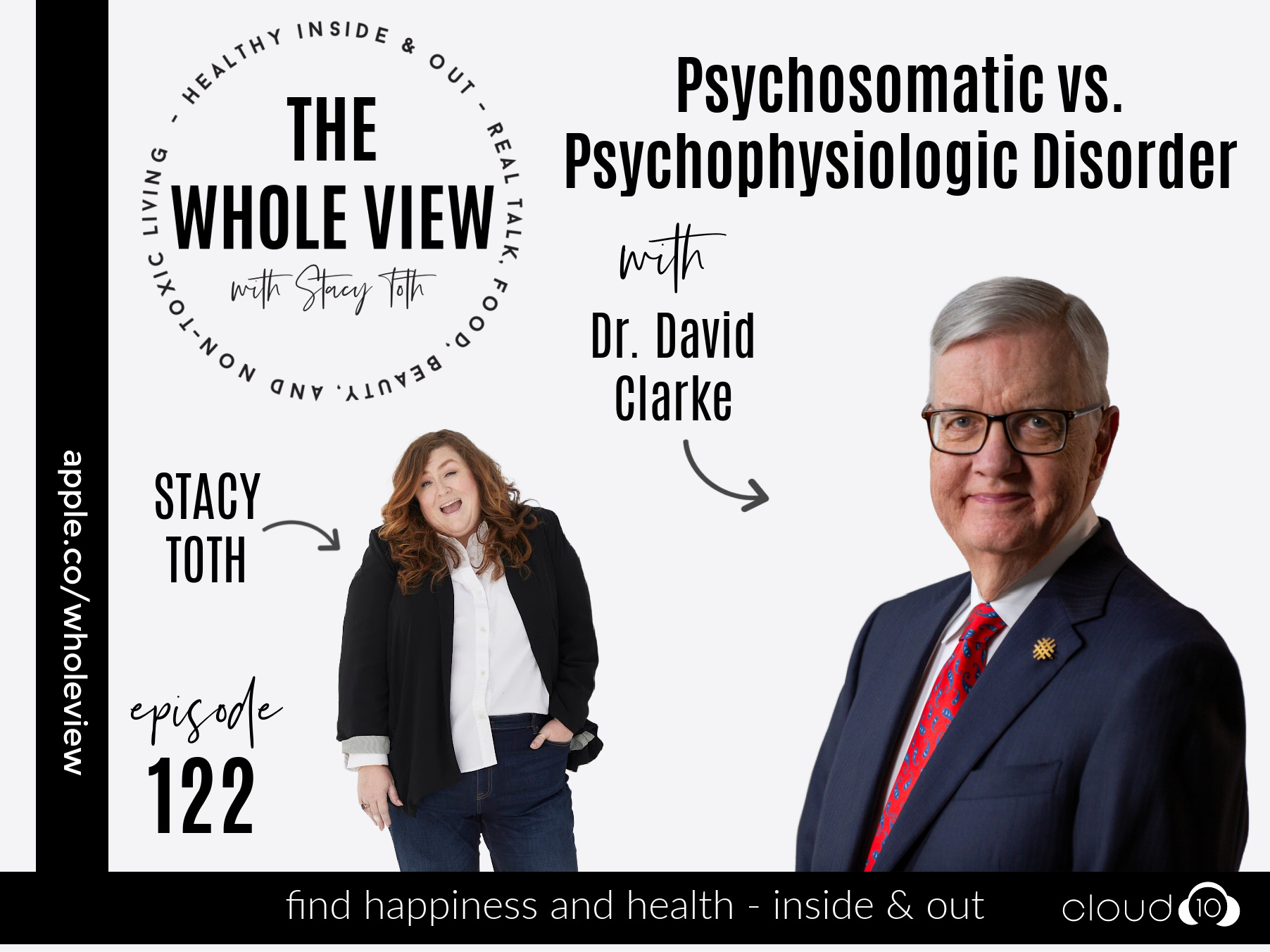Psychophysiologic Disorders Association (PPDA) president Dr. David Clarke, MD, talks to Stacy about why your pain may really be “all in your head” and causing very real symptoms. Dr. Clarke has worked with thousands of chronically ill patients who did not find answers through diagnostic testing. They dive into pain-relief psychology, the physical differences of someone’s brain who has a PPD, and why the term “psychosomatic” gets a bad rap.
Find Dr. Clarke:
If you enjoy the show, please leave a review. Letting people know on iTunes or however you listen that it’s worth their time could change someone’s life!
Key Takeaways
Introductions
- Dr. Clarke is the President of the Psychophysiologic Disorders Association (PPDA), a 501c3 health education nonprofit advancing the diagnosis and treatment of stress-related medical conditions.
- He holds an MD from the University of Connecticut School of Medicine, and is Board-certified in Internal Medicine and Gastroenterology. He has successfully diagnosed and treated over 7000 people who had no explanation for their pain or illness from diagnostic testing.
Psychophysiologic Disorder
The pain is absolutely real, and we need to identify the causes of it. And when we do that, those causes, those stresses, past and present, can be treated successfully. And when we do that, we see that the symptoms begin to improve. That’s really the proof of the diagnosis: When a person’s stresses are identified and treated and they start to feel better, that tells us that we’re on the right track. – Dr. David Clarke
- Psychophysiologic is a combination of the words psychology and physiology, is truly a blend of mind and body. It’s brain-generated symptoms that are just as real from any other cause, just as serve, and just as numerous.
- So psychosomatic is a synonym to psychophysiologic; however, it is often full of negative and demeaning connotation. Some common misconceptions and assumptions with these terms is that it’s “all in your head” or “imaginary”. If a health care provider can’t diagnose it, patients are often just given the option to ” learn to live with it”.
- Some examples of psychophysiologic disorders (PPD) include chronic pain, migraines, fibromyalgia, irritable bowel syndrome, and other sypmtoms that occurs in the absence of injury or organ disease.
- Dr. Clark says symptoms can literally run head to toe”: migraines, ringing in ears, dizziness, visual disturbances, pseudo seizures, difficulty swallowing, brain fog, chronic fatigue, long COVID, IBS, numbness & tingling in extremities, lower back pain, etc. He also notes it’s common to have more than one symptom at a time.
Pain-Relief Psychology
Cognitive Behavioral Therapy unfortunately doesn’t work very well for people with Psychophysiologic Disorders. You have to get into other areas. – Dr. David Clarke
- Physical mechanisms that show occurrence of psychophysiologic disorders PPD may be examined with a functional MRI, as the circuits in the brain are different. Signals in the body are being processed in the brain as something is painful or signals are being sent back to cause things like constipation. This rewiring can come about because of stress, past or present. A great example of this is the 2021 Boulder back pain study [source].
- Pain-relief psychology, circuits can physically change back. Three types of pain-relief psychology:
- Pain-reprocessing therapy
- Emotional awareness and expression therapy
- Intensive short-term dynamics psychotherapy
- What do these therapies have in common? They aim for relief, shift the attention from place in body that has pain and illness to the brain, and uncover emotions that people have that they haven’t been fully recognizing.
PPDA Research Compilation
PPDA compiles over 200+ relevant research papers, grouped by 8 categories [source]:
- Psychological Treatment: Evidence for the benefit of psychological treatment for persistent physical symptoms, particularly for Emotional Awareness & Expression Therapy, Pain Reprocessing Therapy and Intensive Short-Term Dynamic Psychotherapy with much smaller effect sizes from Cognitive Behavioral Therapy, Acceptance & Commitment Therapy and Educational Techniques.
- ACEs and Trauma: Evidence regarding the link between adverse life experiences (child or adult) and persistent physical symptoms.
- Pain Perception: Evidence that psychological factors can change pain perception.
- Predicting the Clinical Course: Evidence that objective measures of organ disease or structural abnormality (such as imaging studies) are not good predictors of persistent symptoms and/or that psychological factors are better predictors.
- Ineffective Treatments: Evidence that invasive treatment, non-invasive non-psychological treatment and opioids are ineffective for chronic pain.
- Neuroscience: Studies of the neuroscience of chronic pain including the key role of altered nerve pathways in the brain.
- Adjunct Treatments: Evidence for the benefits of expressive writing, reappraisal of arousal, and exercise plus a review of smartphone apps for persistent pain.
- Economics: The prevalence and economic impact of PPD.
Studies, References, and Products
Sponsors
Want more info on our Real Life? Healthy recipes, parenting tips, and general lifestyle stuff goes out in our Real Everything newsletter, join here.
Note: Stacy and her guests are not medical professionals. This podcast is for general educational purposes only. It is NOT intended to diagnose, advise, or treat any physical or mental illness. We always recommend you cons


